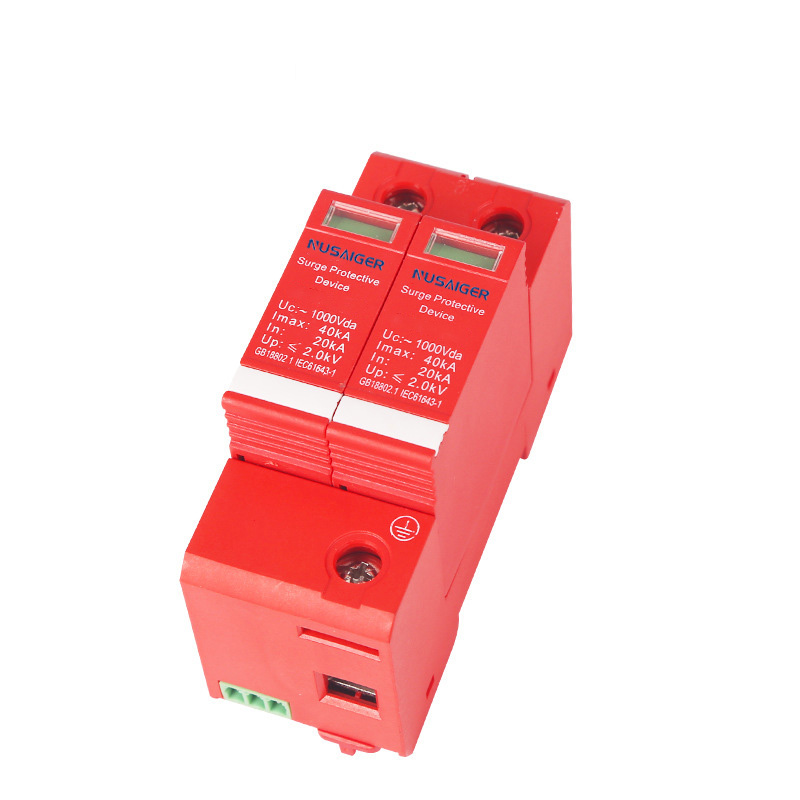Top 10 Common Mistakes When Using Surge Protective Devices and How to Avoid Them
Surge Protective Devices (SPDs) are critical components in modern electrical systems. They protect sensitive equipment from transient overvoltages caused by lightning strikes, grid switching, and other sources. However, the effectiveness of SPDs depends heavily on correct installation, selection, and maintenance. In this in-depth guide, we explore the top 10 common mistakes people make when using SPDs and how you can avoid them to ensure optimal protection.
1. Choosing the Wrong SPD Type for the Application
One of the most common mistakes is selecting an SPD that does not match the system’s voltage level, grounding scheme, or the nature of the equipment being protected. There are three main types of SPDs:
- Type 1: For service entrance protection from direct lightning strikes.
- Type 2: For branch circuit protection and indirect surges.
- Type 3: For point-of-use protection near sensitive electronics.
Using a Type 3 SPD at the service entrance is ineffective and dangerous. Proper assessment of application type is essential before SPD selection.
2. Poor Grounding and Bonding
Grounding is crucial for surge protection. If your SPD isn’t grounded properly, it will not function correctly. Common grounding issues include:
- High ground resistance
- Improper grounding conductor sizes
- Separate grounding paths creating ground loops
To avoid this, ensure all equipment shares a single, low-resistance ground reference, ideally less than 5 ohms.
3. Long Lead Lengths
SPD performance can degrade significantly with long conductor leads between the device and the equipment it’s protecting. Each inch of wire adds inductance, which impairs the SPD’s ability to divert surge energy. Always keep leads as short and straight as possible—preferably under 12 inches.
4. Ignoring Coordination Between SPDs
When multiple SPDs are used in a system (e.g., Type 1 at the panel and Type 2 at a subpanel), they must be coordinated to ensure they operate in the correct sequence. Lack of coordination can result in:
- Back-feeding
- Overstressing downstream devices
- Premature failure of SPDs
Coordination is typically achieved by ensuring a minimum distance or impedance between stages or using devices from the same manufacturer designed for this purpose.
5. Failing to Monitor SPD Health
Many SPDs have built-in indicators or remote monitoring terminals. However, some users ignore them until equipment fails. Regular monitoring can detect degradation before it results in unprotected equipment. For mission-critical systems, consider SPDs with remote alarms connected to a building management system (BMS).
6. Overlooking SPD Ratings
SPD performance depends on several key ratings:
- MCOV (Maximum Continuous Operating Voltage): Must match or exceed system voltage.
- Nominal Discharge Current (In): Should be high enough for the surge environment.
- Short-Circuit Current Rating (SCCR): Must match the available fault current at the installation point.
Underestimating these ratings can result in failure during surges or faults.
7. Installing SPDs in the Wrong Location
Placement matters. SPDs should be installed as close as possible to the service entrance and downstream distribution points. Poor placement can reduce the protective coverage and leave sensitive equipment exposed.
8. Forgetting to Replace Degraded Devices
SPDs are sacrificial devices. They absorb energy and eventually wear out. Depending on the surge activity in your area, SPDs may last 3–10 years. A common mistake is assuming the SPD is a one-time installation. Always replace SPDs after major surges or after their failure indicators are triggered.
9. Neglecting to Protect Data and Communication Lines
Many surges enter systems through Ethernet, coaxial, or phone lines. Relying solely on power line SPDs leaves a significant vulnerability. Use SPDs designed for data lines and ensure they are properly bonded to the same ground reference.
10. Non-Compliance with Local Electrical Codes
Electrical codes vary by region and are updated frequently. Non-compliant installations can void insurance, fail inspections, or even cause fires. Always consult the latest NEC (National Electrical Code) or IEC standards when installing SPDs. Use UL-listed or IEC-certified equipment to ensure safety and compliance.
Conclusion: Smart SPD Practices Ensure Long-Term Protection
Surge protective devices are not “set it and forget it” components. Their effectiveness relies on correct selection, proper installation, ongoing monitoring, and timely replacement. By avoiding these 10 common mistakes, you can extend the life of your electrical system, reduce equipment failures, and enhance safety. If in doubt, always consult with a licensed electrician or a surge protection specialist to audit and validate your SPD strategy.
Need Help Choosing or Installing SPDs?
Our team of experts is here to help. Whether you need guidance for residential, commercial, or industrial SPD applications, we provide free consultation and product support. Contact us today to make sure your surge protection system is built to last.



